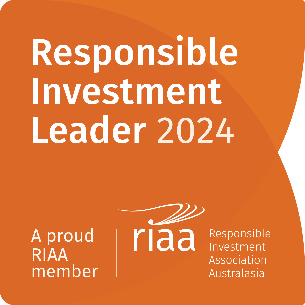Rewarding the value hunters

This month’s interest piece has been written by Devon’s Head of Retail, Greg Smith.
It has been one of the most volatile starts to a year on record, with the catalyst for investor angst not having been Omicron, but instead fears over rising interest rates, and the knock-on impact to economic growth. This has given rise to some concerns over stock market valuations, which have been elevated, particularly in the technology sector.
Tech stocks have been at the epicentre of this year’s sell-off, with the Nasdaq Composite in correction territory, and had recently lost 17% from the November high. The tech laden index has made one of the worst starts to a year in half a century of its existence, on a par with the 10% fall in January 2008 during the global financial crisis. Volatility has continued into February.
The prospect of rising interest rates has thrust the spotlight on the surge in the valuations of growth stocks that has occurred since the onset of the pandemic. Many high-priced tech names have as a result gone into reverse, with more than half of the Nasdaq constituents having fallen 50% or more from their 52-week highs. This has also led to questions over whether ‘’growth’ has had its day, and a rotation towards ‘value’ style investing may be the story going forward.
Such a scenario would fit with one of our 10 Predictions made at the start of the year. In last month’s Special interest piece titled “Crystal Ball Gazing through 2022” (click here to view it) we suggested that ‘The Great Rotation would click up a gear or two’ this year, and that exuberance may have peaked for high price names due to the prospect of higher interest rates. This would effectively raise the bar of expectations, and pressure would be applied to valuations (interest rates are used to discount future cash flows). With 2022 being the year of the Tiger (beginning 1 February) according to the Chinese Zodiac calendar, we posed the view that this could be the year when ‘value’ comes roaring back into focus.
While early days, given the volatility witnessed amongst growth names in January, is this prediction already beginning to play out, with an environment which will increasingly favour and reward astute value investors?
Before answering that question, it is also worth delving into the concept of value investing, which means different things to different people.
What is value investing?
The term ‘value investing’ is a widely used one, equally one that is often misunderstood. Many investors will know that ‘officially’ the concept was originally developed by Columbia Business School professors Benjamin Graham and the lessor known David Dodd in 1934. It was later popularised in Graham’s 1949 book ‘The Intelligent Investor’ (well worth a read if you get the chance).
Effectively a value investing strategy involves identifying companies which are trading below their intrinsic value (often determined as a range), which is modelled through the analysis of quantitative inputs (balance sheets, profit & loss and cash flow statements and financial accounts) to ultimately to determine the present value of future cash flows. Qualitative inputs (such as, but not limited to, the company’s brand, business model, competitive positioning and management) are also assessed as part of the investment process.
The concept of value investing further assumes a need for a ‘margin of safety’ which involves assuring that the difference between a company’s assessed intrinsic value and current share price is as wide as possible (Ben Graham as it happens aimed for a differential of at least a third). A higher margin of safety allows for a greater potential return when markets ultimately reprice the company to its fair value, and effectively provides a ‘buffer’ should the stock not perform as expected, and a cushion until markets ultimately recognise the stock’s inherent value. A higher margin of safety ultimately reduces investment risk, against the backdrop of (at least in the near term) imperfect markets.
On a similar sounding note, Warren Buffett is of course one of most well-known disciples and arguably the most consistently successful proponent of value investing thus far in history. Buffet in fact studied under and was mentored by Graham, and throughout his career has regularly been at pains to point out what a successful value-based investment strategy is.
One of Buffett’s best-known quotes is that “It’s far better to buy a wonderful company at a fair price, than a fair company at a wonderful price.” This goes to the essence of the value investment ethos, which involves buying (high quality) stocks at a discount. Another one of Buffett’s sayings is just as insightful.
‘Price is what you pay. Value is what you get.’ In a 2008 letter to shareholders of his investment company Berkshire Hathaway, he wrote “Whether we’re talking about socks or stocks, I like buying quality merchandise when it is marked down.”
This goes to the view that value investing cannot be assessed by looking at the price of stock in isolation, or even simply by referring to basic metrics such as price to earnings, price to book and the like, and declaring the stock to be ‘cheap.’ Astute value investing requires a rigorous assessment of a host of quantitative data and qualitative factors. Understanding the difference between price and value is a core principle of value investing.
The Alternative
Growth investing meanwhile is a widely popular alternative to value investing, and in many ways is at the opposite end of the spectrum. This investing style effectively seeks out companies that exhibit above average market rates of earnings growth, and the assumption is made that they are likely to repeat this into the future. Growth investors are typically willing to ‘pay up’ for such levels of growth and pay above market multiples across a variety of valuation metrics (Price to Earnings, Price to Book, Price to Sales, and so on).
Investors following a growth style tend to take a helicopter view of a business’s free cash flows well into the future, with valuations assessed over a longer duration. Cash flows are effectively discounted by the current interest rates (cost of capital) and it is this denominator that is the most significant potential discriminator between the value and growth camps. The higher interest rates are, and the further the time out before cash flows are expected to be generated, the less each dollar of those future cash flows is worth.
Given the above relationship it may not surprise that growth stocks have been highly sought after while interest rates have been ultra-low, particularly since the global financial crisis. Substantial levels of stimulus have of course been injected into the financial system during that crisis, and also of course during the pandemic over the past two years. Central banks have maintained cash rates at or near zero, while also flooding the system with liquidity (e.g. quantitative easing) to keep bond rates low.
These stocks have also been in demand as many high growth sectors, led by technology, have had their earnings’ trajectories turbo charged by the pandemic and the stay-at-home thematic. Many older economy/value style sectors (think financials, industrials, reopeners) have in contrast been hampered by COVID, and been less in favour as a result.
This and a low interest rate era have all served to extend the outperformance of growth vs value. As the chart below shows, this period of outperformance (shaded light blue) has endured longer than at any other points in the last 50-years.

Source: Goldman Sachs
The Great Rotation – why now?
There are a number of reasons in our view why the environment going forward in the years ahead will be much more favourable for value investing as opposed to growth strategies. Indeed, there is a case that the baton change may not only be fairly swift this year but will endure for a very long time.
At its simplest, the reality is that the ultra-low interest rate environment is coming to an end. The question over whether the Fed and other central banks will raise interest rates two, three, four or five times this year is moot. The inflationary outcomes (successfully) delivered on the back of unprecedented global monetary and fiscal stimulus initiatives mean that central banks are now focussed on tightening measures here on in, effectively “taking away the punch bowl.” Interest rates are going higher, no question.
The pivot by central banks, led by the Fed in the US, away from the ‘transitory’ inflation argument late last year was significant. The RBNZ of course was one of the first to go early on rate hikes in October, but markets are now facing the reality that most central banks will be in tightening mode this year. Some are still holding out, with the RBA in Australia sticking to a view that it will not increase rates until 2023 (even if the markets are pricing in a rate hike well before then). But either way, interest rates will be heading north.
Why is this significant? As the chart of the US 10-year Treasury bond shows below, interest rates have passed a key inflection point, and are heading up for the first time in a long time.
US 10-year Bond yields

Source: IRESS
As noted above higher interest rates have a disproportionately negative effect on the valuations of growth stocks, which depend on cash flows expected far into the future. A dollar earned in the future will be increasingly worth less than it is today. The bar of expectations will rise, and we believe we are already seeing this play out in the current US reporting season. As we also know where the US heads, the rest of the world tends to follow, and we expect this will be the case with the rotation from growth to value in 2022.
Companies which have delivered a negative surprise on their future earnings outlooks have been severely punished, with Netflix, Tesla, Meta/Facebook and Spotify all recent high-profile examples in the US.
Netflix tumbled after having a great December quarter, but warning about the pace of future subscriber additions. Tesla reported a 760% surge in quarterly net income but their shares tanked after Elon Musk said that no new vehicle models will be produced this year. And then there’s Facebook’s parent Meta Platforms.
The company formerly known as Facebook reported a 20% lift in quarterly revenues, but net income came in below forecasts as their costs have blown out. User additions have also stalled as younger generations are heading to rival platforms. The stock fell 25%, losing more than US$200 billion in value, the biggest one day fall in US corporate history.
Does the reaction to outlook statements from these global tech growth names, which have boomed during the pandemic, mean that the day of reckoning has arrived for growth stocks? This is especially concerning given the performance divergence between the two styles has been (since the GFC) the largest in history.

Source: www.yardeni.com\
We believe it is likely that investors are going to be increasingly cognisant of the high valuations that many growth names continue to trade on despite the recent correction, as the prospect of ongoing interest rate rises effectively raises the bar of expectations. This all gives further credence to our prediction that a market rotation from “growth to value” stocks will accelerate this year.
We see this trend playing out globally and believe it will be highly relevant to investors in the New Zealand and Australian markets. The rotation away from growth will to be the benefit of companies that fall into the value camp.
The Australian market is a particularly fertile ground for value hunters as the below chart shows. ‘Low PE’ firms are trading at a 58% discount to the ASX200 benchmark. More significantly this value gap is 13% below the 20-year average, and the only time previously this has been witnessed was during the depths of the GFC.

Source: Goldman Sachs
There is clearly substantial scope for a significant and sustained re-rating as this gap closes, but also as ‘expensive’ stocks fall further out of favour with global interest rates rising. The relative appeal of value stocks should gain with a global economy which is growing strongly (the IMF expects growth of 4.4% in 2022 and 3.8%). Many old economy stocks and sectors that are tied to the economic cycle could thrive in such an environment.
Against this backdrop, and as a value-oriented manager, our approach at Devon Funds continues to be seek out and maintain exposure to high quality companies with excellent investment credentials, including strong track records, robust balance sheets, great management, great economic moats, and strong long-term earnings prospects. Ticking all these boxes and ensuring that we are paying the right price for each business, is essential in our view to driving performance outcomes over the next stage of this cycle.





